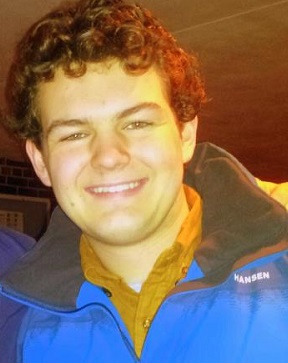News
Notes from Standing Rock
| Burbank |
by Henry Burbank ’16
“Bridge Closde,” the spray-painted sign ominously read. There were three of us in the white, U.S. Government-plated Ford Expedition, and we were some ways away from the nearest dirt, let alone asphalt, road. For the past fifteen minutes, myself, the school janitor, and one of my seventh-grade students had driven up the sides of steep hills, down into pristine valleys, and through herds of cattle and prairie dog towns. Now the only thing separating us from our destination (my student’s house), was the Grand River, and the dilapidated bridge before us.
Since graduating from Kenyon in 2016, I’ve been living and working on the Standing Rock Sioux Reservation in South Dakota. Standing Rock made headlines last year during a tense standoff between activists and the North Dakota state government, but I decided to come here long before any of those events transpired. I was home for spring break and received an email offering me a spot with Teach for America, a highly-competitive organization that provides teachers to high-need schools across the country. I didn’t have much experience teaching, I knew next to nothing about South Dakota, and was hoping to work in Washington or one of the Presidential campaigns in 2016. “I don’t know if I want to say yes,” I remember thinking to myself at the time. “But I sure as hell don’t want to say no.”
 |
| Bullhead Panorama |
A little over a year into the job, and I can confidently say that saying no would have been a terrible decision. After accepting the offer with Teach for America, I interviewed and was hired to teach a combined 7th and 8th grade classroom at Rock Creek Grant School. I teach all subjects, but primarily Math and Reading, to a total of eleven students across the two grades. I’d never heard of two grades being in the same classroom before, but I’d never worked in a “town” of 300 people either. In addition to being tiny, Bullhead is extremely isolated. Once you leave the village (there’s only one road in and out), you’re 20 miles from the county seat and “city” of McLaughlin, population 600. From there, it’s almost 100 miles to Bismarck, North Dakota, the closest city with more than 5,000 inhabitants. Between Bullhead, McLaughlin, and Bismarck, travelers are greeted to views of rocky buttes and vast plains of scrubby grass. It’s beautiful, but in a terrifying kind of way.
The physical environment isn’t the only terrifying thing about life out here. Bullhead, and the Standing Rock Reservation generally, is a rough place to grow up. There’s not much industry in the town other than ranching, and there isn’t much capital either. The average household income is $14,000 a year, and this, combined with the lack of job opportunities and physical isolation, makes it a hard place for an ambitious and smart kid to succeed. Drug use, particularly methamphetamine, is tragically commonplace. Sexual and domestic violence is a routine, if swept under the rug, problem, as well. Last year, two of my students experienced long-term hospitalization due to attempted suicides, and another student recently tried this year as well. After a certain point, the horror just becomes routine.
However, people are working on solutions. Despite the abysmal economic statistics, Bullhead (or Rock Creek as it’s known in the Tribal Government) is innovating new ways to provide economic opportunities to its young people. With the help of local ranchers, for example, they’ve started a program that gives qualifying students five head of cattle that they can raise and sell. In addition to teaching basic agricultural skills, the students get to keep any calves (thus growing their principal) and any money earned is put into a college account.
Even the events surrounding the Dakota Access Pipeline last year brought positive byproducts to the region. After the protests began, there was a revival of popular interest in the culture and history of the region, both from insiders and outsiders. Thankfully, this interest has not gone away with the installation of the pipeline. To prevent Lakota, the language of Sitting Bull, Crazy Horse, and my students, from dying out, the Tribal Government has implemented a variety of initiatives. Among these is a full Lakota-immersion preschool program, which has been touted as an example of success.
I didn’t know much about Standing Rock when I said “Yes” last March. But after being here for over a year, I’ve learned a lot. Back then, I’d thought I’d be venturing into a poverty-ridden world forgotten by history and torn apart by injustice. The reality, as is often the case, is more complicated. Yes, my students and their families face serious and tragic problems, but it’d be false to say that the reservation is full of nothing but despair. Programs like the cattle loan and the Lakota Language Immersion School are providing opportunities to a new generation of leaders, and inspiration to those who’ve been working in this community their whole lives.
“After twenty-seven years of teaching,” one of my co-workers said, “I’m optimistic about our future.”

